As I write this, we are in the middle of one of the worst droughts recorded. Most waterholes, creeks and dams are dry, or if not, very close, and our fauna is suffering.
Providing a bird bath or two is a sure way to help them survive the hot, dry summer until dams fill up and our creeks trickle again. It is not only the birds who enjoy a quick dip, but also our scaly and fury friends; they may be a bit more discreet and often under the cover of darkness.
Over the last few years, several Land for Wildlife members have installed fauna cameras next to their bird baths to identify the visiting bird species. To our surprise, once the sun goes down, a number of other animals have shared this neighbourhood facility. Gliders, possums, pademelons, goannas, echidnas, phascogales, Koalas and wallabies have been caught sipping from a well-placed, clean bath.
There are many benefits to providing water for our wildlife. During dry times, you may be saving their lives if there is no permanent water nearby. It is also a great way to get closer to nature, to observe and identify species that are often only seen flittering through the tops of eucalypts. It is also a great way to witness seasonal changes in bird populations. I find nothing more gratifying than enjoying a coffee with one of my Land for Wildlife members while watching the daily activities in the local bird bath – like a bustling morning market.
When providing a bird bath/s, there is a bit more to consider than you might think. Below are a few suggestions to attract a variety of animals to your bird bath, whilst ensuring it is accessible, safe and simulates the natural environment.
Location
As they do in your bushland, different species require different habitats. It is no different when installing a bird bath. Echidnas, Koalas, other smaller mammals and reptiles will find it difficult to use a bird bath off the ground, and so something at ground level will suffice for these creatures. Gliders, possums and Koalas can access a bird bath placed close to the trunk of a tree (as per pictures). To attract smaller shy birds, such as honeyeaters, placing a bird bath close to a bushy shrub or hedge will allow them to safely dart in and out of the bush.
Shade
Keep your bird bath away from full sun to keep the water cool.
Pets
If you have pets, make sure a bird bath is out of reach. Domestic and feral cats will lurk around bird baths looking for an easy feed.
Safety
I have seen birds and small mammals drown in deeper plastic or non-porous water sources. Using a shallow porous bird bath or placing a stick or rock in deeper non-porous bird baths will give struggling animals a chance to climb out.
Regularly-filling bird baths
On a dry, hot day there’s often a big queue for the bath. Bathing birds often splash most of the water out. Regularly filling bird baths once or twice a day is often needed.
Hygiene
Hygiene is very important. Bathing birds can potentially put diseases in the water. There are records of various avian flus spreading from unhygienic bird baths. Cleaning (with a soft brush) and regularly changing the bath water will help eliminate the spread of disease.
Weeds
As they do throughout bushland, birds can spread weeds around bird baths. Climbing Asparagus, Ochna and Brazilian Nightshade are a few common weeds that may be found under bird baths. When young, they are easily hand-removed. If you are having trouble identifying or controlling weeds, contact your Land for Wildlife Officer for advice.
There are many Land for Wildlife members in Brisbane who have been providing water for their local wildlife for years. Renee Chamberlin from Kholo is one of many and in the facing article she offers her experience with bird baths.
Cody Hochen
Conservation Partnerships Officer
Brisbane City Council

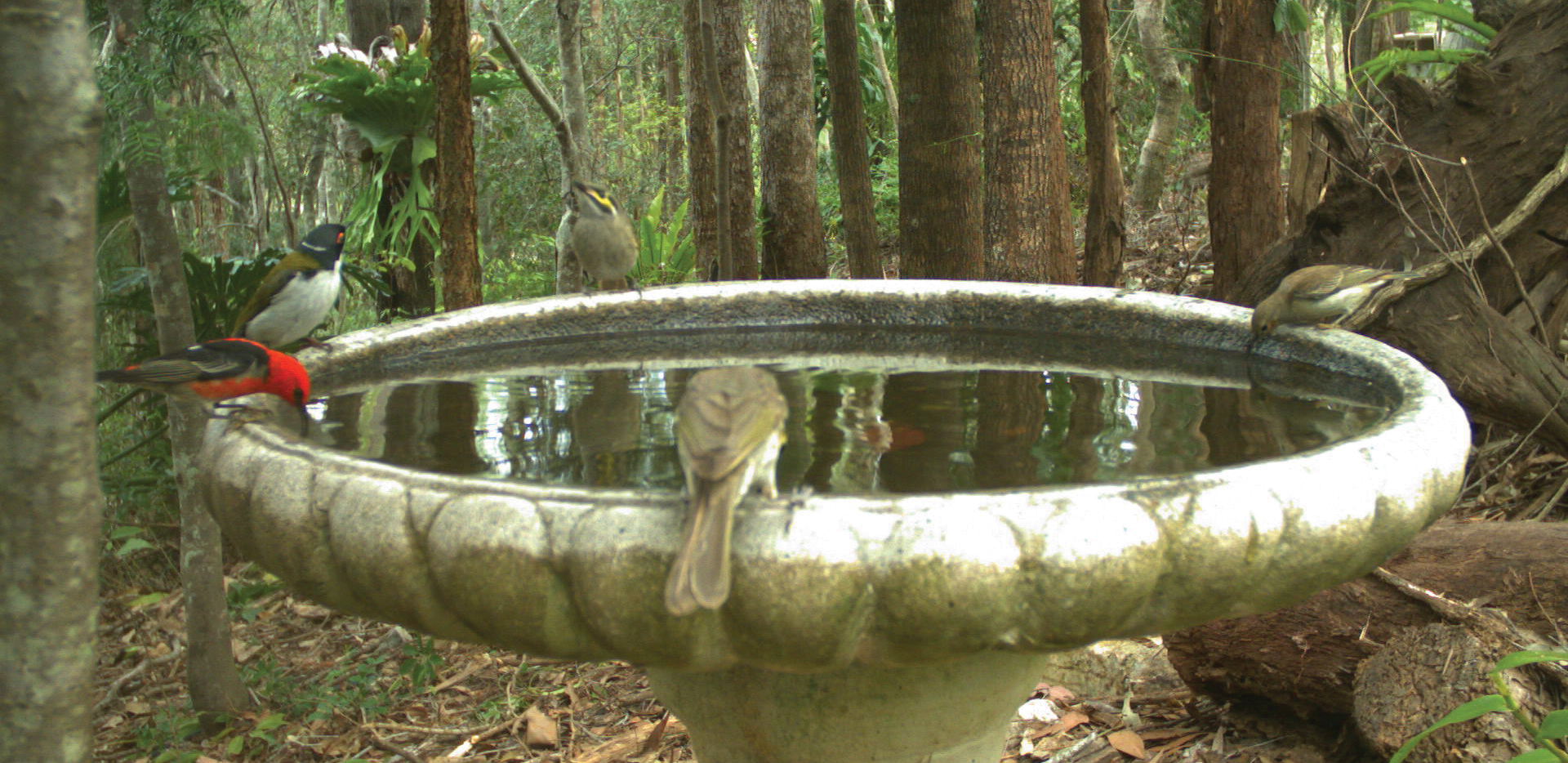
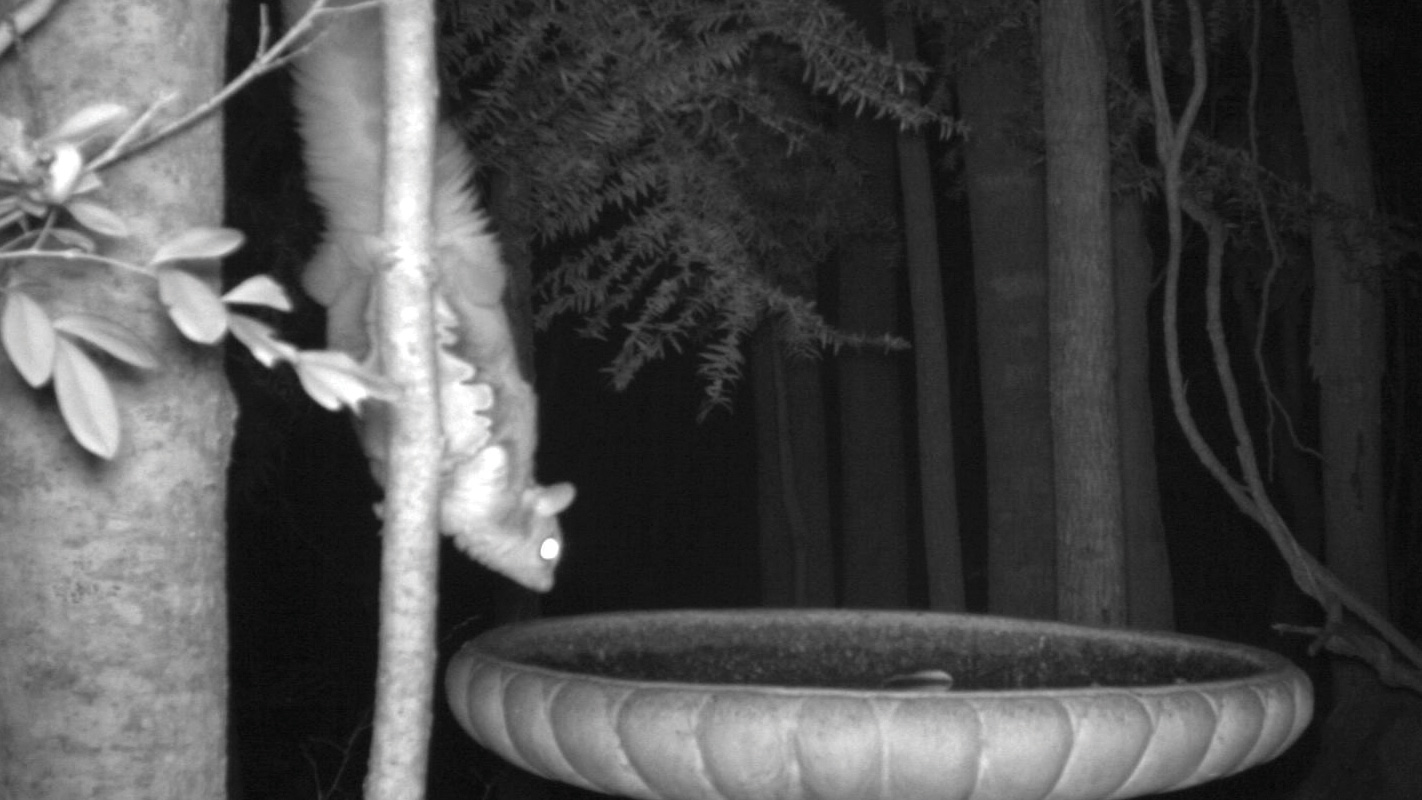
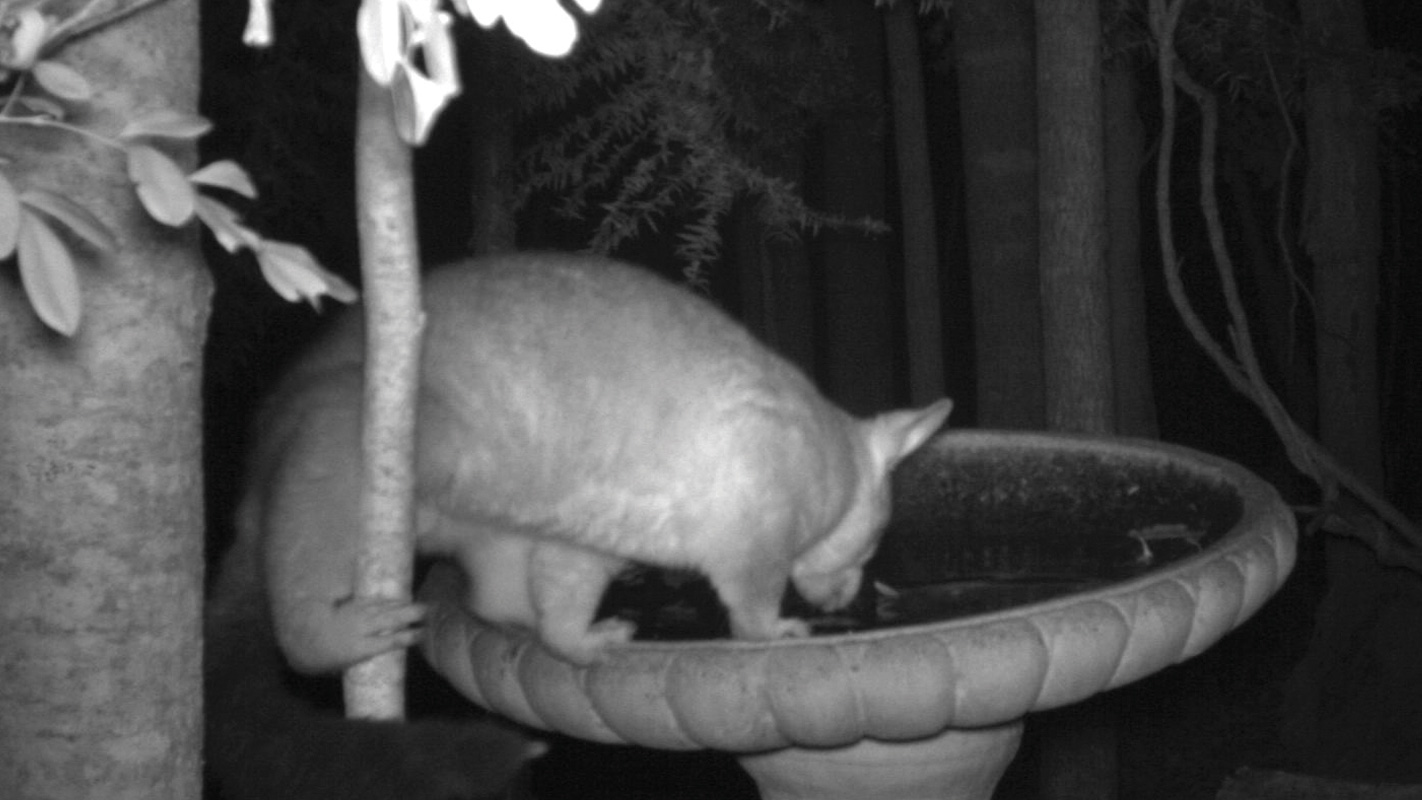
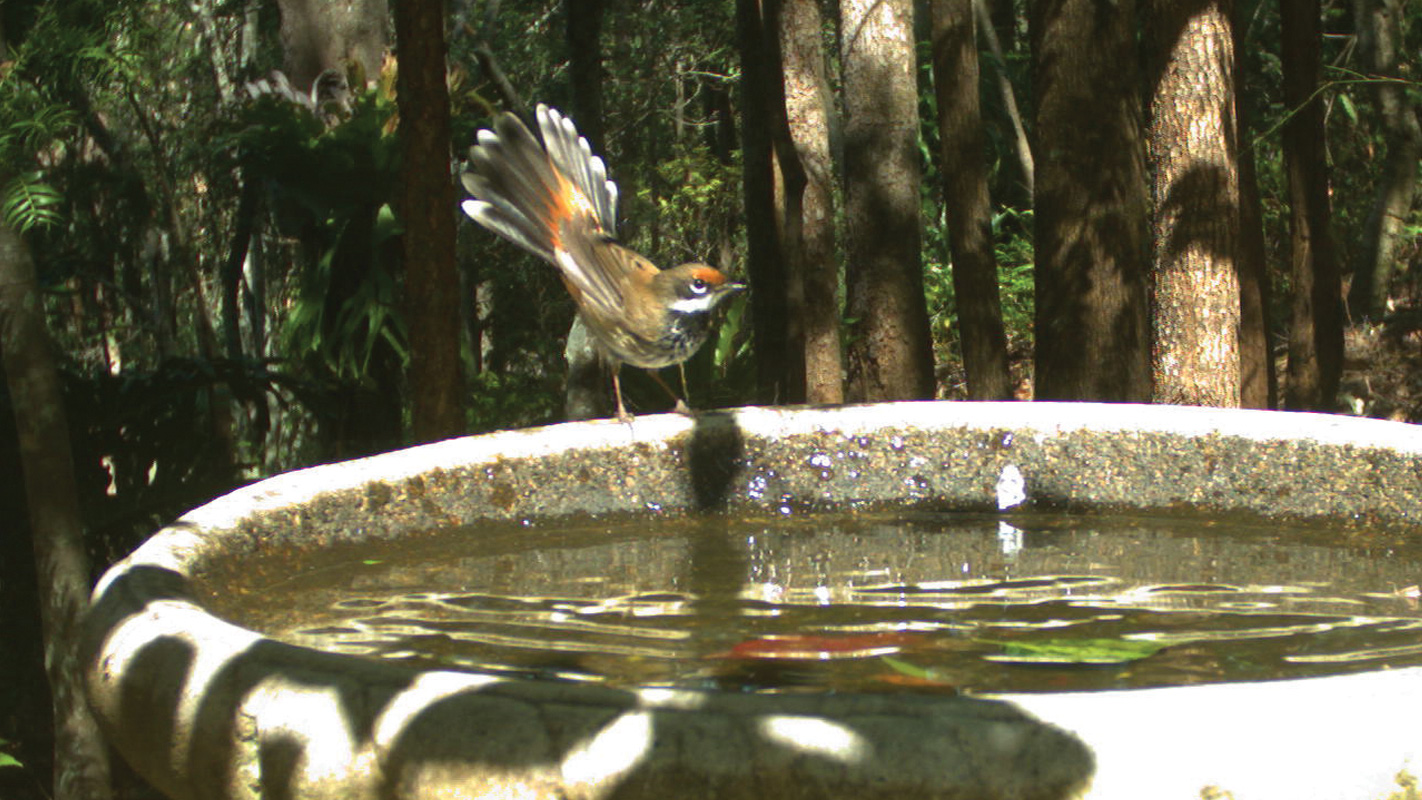
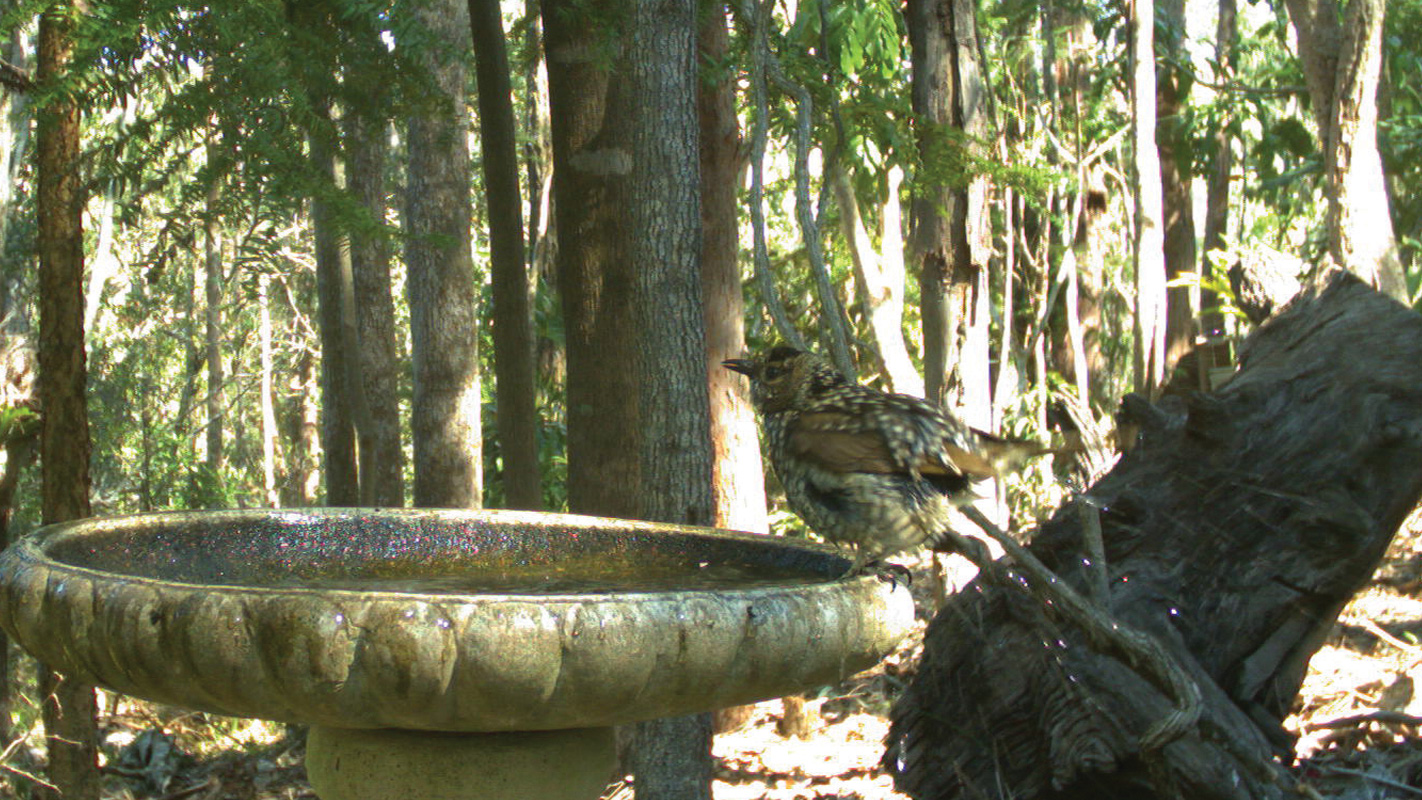
Thanks for sharing useful information. Bird baths are aesthetically pleasing to have in your garden and provide birds in your yard a place to clean themselves and get a drink of water.
Care should be taken with concrete birdbaths that the top is well secured to the base as I have seen a top flip off when a heavy possum went to drink from one of these with sadly, deadly results. I have placed all my concrete baths onto stumps or similar with a wider base.
Thank you.
I have three bird baths in my small courtyard garden.
Have 14 bird species as daily regulars.
Need another bird bath.
Having trouble finding a solid one just under 80 cms high.
Any idea?